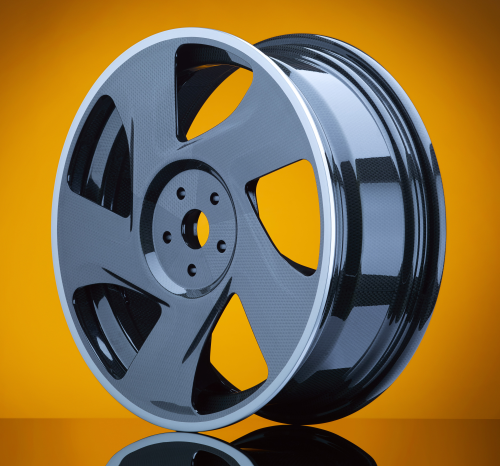
The wheel employs SABIC’s ULTEM™ polyetherimide (PEI) resin and Swiss company Kringlan Composites’ wheel design and manufacturing process, which is designed for short cycle times and high-volume production.
| ... in the automotive industry alone, several OEMs have shown interest in the carbon composite wheel application, which can enable the reduction of CO2 from a passenger car by 2-3%. |
| Steffen Heinecke, CEO, Kringlan Composites |
The design also provides the flexibility for the wheel to be fitted with traditional metal spokes, or spokes with carbon fibre-reinforced ULTEM resin composites, potentially enabling even greater weight savings.
The full composite wheel design complies with current standards set for metal wheels by German testing institute TüV. This opens up the opportunity to work with global automotive OEMs on prototyping lightweight wheels according to their specifications.
“Combining SABIC’s high-performance ULTEM resin with Kringlan’s proprietary three-dimensional manufacturing technology for carbon composites offers OEMs the opportunity for reduced weight, lower production costs, as well as material recyclability," explains Thierry Materne, Vice President, Technology & Innovation for SABIC’s Innovative Plastics business.
"When compared to other thermoplastic materials, the ULTEM resin composite concept offers superior strength at high temperatures, dimensional stability as well as resistance to chemicals.”
Beyond automotive
While the first application of the ULTEM resin composite is in the automotive industry, the material has potential in other markets where weight reduction is a key driver.
For example, in washing machines this carbon fibre composite technology could reduce the inertia (the amount of energy needed) to start the machine drum moving, compared to current metal alternatives. This would mean greater efficiency, and potentially a lower carbon footprint for the machine.




